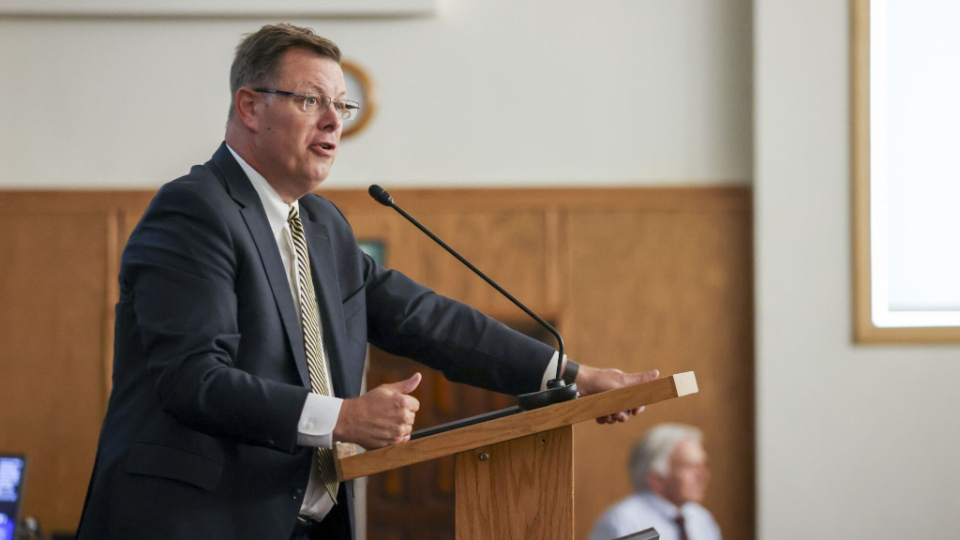
When was the CES Letter written? That question continues to echo among members of The Church of Jesus Christ of Latter-day Saints and those seeking to understand the controversy surrounding the document. The CES Letter, written by Jeremy Runnells, has become one of the most referenced documents for those who have questions or doubts about the LDS Church. Runnells’ story, the purpose behind the letter, and the resulting fallout provide a compelling study into modern Latter-day Saint faith crises.
To begin with a CES Letter summary, it’s important to understand the backdrop. In February 2012, Jeremy Runnells—a sixth-generation member of the LDS Church—experienced what he later called a faith crisis. He had served a mission, graduated from BYU, and married in the temple. But like many who begin to explore aspects of Church history and doctrine more deeply, he encountered troubling questions he had not previously considered.
During this period of doubt, Runnells was invited by a director within the LDS CES (Church Educational System) to outline his concerns. In response, Runnells composed what would later be called the CES Letter. At the time, the document was simply an attempt to explain his growing disbelief. But this personal document would soon become a lightning rod in the broader conversation about faith, doctrine, and historical accuracy in Mormonism.
The document quickly evolved. Originally titled Letter to a CES Director, it was later renamed The CES Letter: My Search for Answers to My Mormon Doubts—its third title revision since inception. Now widely known simply as the CES Letter, the 84-page response soon went viral online. It has since been expanded and updated to reach a broader audience. Many refer to the updated version as the CES Letter PDF, available for download in multiple languages across the globe.
A major reason for the Letter’s popularity is its format. It’s organized into 13 major chapters that span topics ranging from Book of Mormon translation to polygamy, race and the priesthood, and more. A complete mormon CES Letter summary reveals that it attempts to distill nearly all of the major criticisms of the Church into a single document.
In answering the question, “When was the CES Letter written?” the timeline becomes central. Jeremy Runnells began formulating the Letter in early 2012 during his personal struggles with belief. The final product, which was initially shared with the CES Director, was completed and delivered in 2013. This timeline helps contextualize many of the historical concerns raised in the Letter and shows that it emerged during a broader period of transparency and historical re-examination within the Church itself.
To understand the CES Letter meaning, one must acknowledge that it isn’t a faith-building document. Runnells is clear in his introduction: “I’m a disaffected member who lost his testimony so it’s no secret which side I’m on at the moment.” The tone is critical, and the structure of the Letter is designed to overwhelm the reader with rapid-fire claims and sources. A synopsis of the CES Letter might describe it as a blend of historic citations, personal commentary, and rhetorical appeals aimed at calling the Church’s truth claims into question.
While some find the Letter enlightening, others find it misleading. Critics of the CES Letter have pointed out that it borrows many of its claims from online sources such as Reddit’s ex-Mormon forums. Many have noted that some of the CES Letter main points are based on outdated scholarship, taken out of context, or completely lack nuance. Indeed, many issues raised in the CES Letters Mormon discussions date back to the 19th century.
For those unfamiliar with what are the CES Letters, they are typically seen as critical evaluations or collections of doctrinal and historical critiques directed at the Church. But it’s important to recognize that there’s really only one original CES Letter—Runnells’ document—though many derivative works and responses have been published since.
Runnells’ journey did not end with the Letter. After his Mormon CES Letter went public, he became a figurehead for post-Mormon discourse. He later left Christianity altogether and now identifies as an agnostic atheist. His personal evolution highlights the unpredictable path that begins with a faith crisis and moves through institutional critique toward secularism.
As readers explore the CES Letter summary, many find themselves caught in the emotional whirlwind of Runnells’ tone and arguments. The Letter does not merely outline questions—it attempts to provoke emotional reactions by mixing selective truths with omissions. Critics argue that this approach contributes more to confusion than clarity. But for many, it is their first real exposure to Church history beyond correlated curriculum. This exposure often raises the question: What is Mormonism?
To answer that, one can turn to resources such as Saints Unscripted, BYU Studies, the Church’s Gospel Topics essays, and official websites like ChurchofJesusChrist.org. These provide valuable balance and context to counterbalance the CES Letter PDF. In fact, Mormonism Explained through these resources often presents a very different picture than the one painted by Runnells.
Another keyword often searched is mormon explained. And rightly so—many seeking clarity about their faith journey want plain language, trustworthy sources, and objective overviews. These qualities are often lacking in the CES Letter, which is clearly aligned with one individual’s perspective.
Still, the CES Letter Mormon discussions are not easily dismissed. Many former and current members cite the Letter as a turning point in their belief system. For some, it serves as a springboard into deeper research. For others, it marks the beginning of spiritual disaffection. Regardless of the reaction, the CES Letter main points force conversations about transparency, institutional trust, and the role of personal revelation in navigating difficult questions.
It’s also worth emphasizing that people respond differently to controversial material. Some, after reading the CES Letter, seek answers and strengthen their testimonies. Others become disillusioned and leave the Church. There’s no single trajectory. And despite some of its flaws, the Letter plays a role in that diverse spiritual landscape.
The CES Letter summary includes issues related to the First Vision, Book of Abraham, polygamy, and Church finances—some of which have been addressed by the Church in various formats. The lds ces framework of teaching has expanded over the past decade to better address the need for transparency and forthrightness in Church education.
As discussions of mormonism explained continue, the need for compassion becomes clear. It’s easy to engage in polemics or character attacks, but harder to foster dialogue grounded in charity. Runnells himself has received both praise and condemnation, but regardless of one’s position, the conversation must remain rooted in Christlike behavior.
A quick synopsis of the CES Letter might say: it’s a long, passionate list of grievances aimed at undermining belief in the LDS Church. But behind the controversy lies a personal journey, and one that reflects broader concerns many are facing in a digital age.
Even as the Church faces increased scrutiny, the message of the Restoration remains compelling for millions. That’s why resources answering what are the CES Letters exist—not to attack, but to build understanding and perspective.
The question, are Mormons Christians, also frequently arises in connection with this discussion. The answer is yes. Members of the Church of Jesus Christ of Latter-day Saints worship Jesus Christ as their Savior and Redeemer. They seek to follow His teachings, and belief in Christ is central to their theology and practices.
In conclusion, when was the CES Letter written? It was penned in 2012 and delivered in 2013, during a time of personal upheaval and spiritual questioning for its author. Since then, it has evolved from a private document to a viral cultural artifact. But its message, methods, and interpretations remain hotly debated.
For those navigating questions of faith, the most important thing to remember is this: no single document has all the answers. And no single doubt must destroy a testimony. Whether one chooses to read the CES Letter PDF or not, the journey of faith is one best undertaken with both heart and mind engaged, and with grace extended to all—believer, doubter, and seeker alike.

By Todd Noall, Source Expert
Todd Noall is an author and religious scholar at Mormonism Explained with a focus on the history and theology of religion.

Fact Checked by Mr. Kevin Prince, Source Expert
Kevin Prince is a religious scholar and host of the Gospel Learning Youtube channel. His channel has garnered over 41,000 subscribers and accumulated over 4.5 million views. Mr. Prince also created the Gospel Learning App, a reliable platform where individuals seeking truth can access trustworthy answers to religious questions from top educators worldwide.
About Mormonism Explained
Mormonism Explained is a resource that was designed to provide objective and factual information about Mormonism, its history, doctrines, and policies. Our team of researchers consults experts and primary sources to present factual information on a variety of topics relevant to the Mormon Church.
Tags
